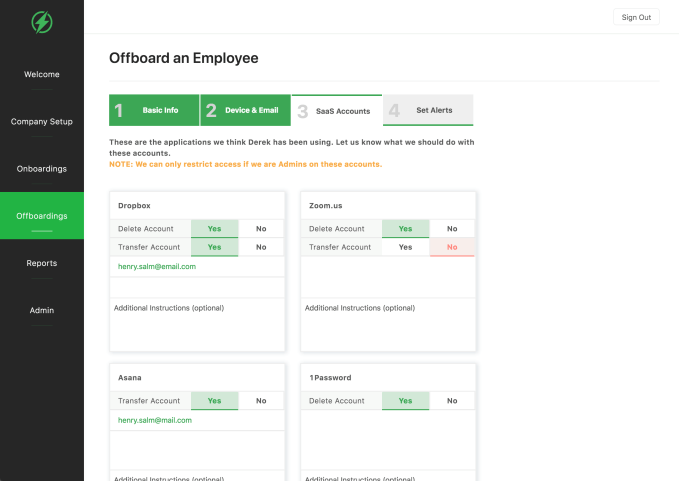Facebook has agreed to plough more resource into combating the use of its advertising platform by scammers, saying it will do more to tackle scam ads that use well-known public figures to try to trick consumers.
It plans to launch a dedicated scam ad report button in the UK, slated to go live in around three months’ time, as well as set up a specialist, locally-based team to monitor ad reports, keep an eye on scammer trends and generally work on getting celebrity-exploiting scam ads taken down more quickly than its current AI-aided ad review systems have been doing.
The new measures were announced in a joint press conference with UK consumer advice personality, Martin Lewis, who launched a defamation lawsuit against Facebook in April, saying the social network giant had failed to stop scammers using his image on scores of ads that aimed to swindle consumers, thereby damaging his reputation.
Some of the ads had tried to use Lewis’ image to promote crypto scams.
Lewis filed suit after becoming frustrated by the scale of scam ads bearing his image and Facebook’s tepid response to the problem its platform has created — telling the Guardian last year: “What is particularly pernicious about Facebook is that it says the onus is on me, so I have spent time and effort and stress repeatedly to have them taken down.”
He confirmed today that he’s dropped the lawsuit after Facebook agreed to make changes.
“There were over 1,000 on Facebook in a year. And the way that the company acted then wasn’t good enough, so I had to resort to [taking legal action],” he said during the press conference, adding that he had wanted to see “tangible real change to the number of scam ads on the platform”, so was happy to drop the lawsuit because he believes the new report button will do that.
Facebook has also agreed to provide funding to help get a citizens scam advice service up and running in partnership with UK consumer advice charity, Citizens Advice. Lewis said he was delighted with that outcome.
The social network giant, which took in $13.73BN in revenue last quarter, said it will donate cash and Facebook ad credits to the value of £3 million over the next three years to help set up the new scam advice bureau within the charity.
This will be called ‘Citizens Advice scams action project’ (aka Casa), and the pair said it will aim to provide information and support to consumers who are concerned they are being targeted by or have fallen victim to a scam.
Facebook’s support for Casa breaks down into £2.5M in cash over the next two years, and £500,000’s worth of ad credit coupons for ads on its own platform, which it said will be distributed in tranches over the next three years.
There was little detail on exactly how Casa will operate at this nascent stage but given the ad credit donation its work will presumably include running scam awareness ads on Facebook — funded (initially) by Facebook itself. Ergo, part of the company’s donation will be ploughed straight back into its own ad business.
Pressed on whether its approach with an ad report button still puts too much onus on consumers to have to protect themselves from scams being spread on Facebook’s platform, its regional director for Northern Europe, Steve Hatch, claimed it does already take down “huge amounts of these ads” but admitted its ad review systems are “not perfect” — hence the company seeing value in introducing a button for direct user reports of dodgy ads.
For his part Lewis said he had never wanted to have to go to court but said his intention had rather been to draw attention to the problem and pressure Facebook to do more. He said he was therefore pleased it had agreed to do more to tackle scam ads.
“This button is only in the UK. This is not Facebook worldwide. This is unique to the United Kingdom that has not been done anywhere else and it is a direct result of this scam ads campaign. And I’m actually very grateful to Steve and his team here in the UK for pushing this on what is normally a global organization that works in a global way,” he said.
Albeit, to be clear, Facebook is not accepting legal liability for scam ads. And there’s no suggestion that any existing victims of the scam ads which bore Lewis’ image are going to be in line for any direct compensation from Facebook for their losses.
Asked directly about the compensation point, Hatch sidestepped the question, saying Facebook is focusing on what more it can do to stop scammers from defrauding people in the first place.
Also pressed on why it had taken a lawsuit by a celebrity consumer champion to get it to do more, he said: “This is an area we’ve focused on for a very, very long time. But what [Lewis] has really pushed us towards is this specific focus about the use of public images and celebrity.”
While the new measures are UK only for now, Hatch suggested Facebook might look to expand the approach elsewhere if it proves successful.
“We’ve started in the UK,” he said in response to another question. “Like any system if we find it works — and we sincerely hope that it does, we think we’ve got the right amount of focus, we think we’ve got the right amount of investment behind it — it’s very imaginable that we would take this out to other markets. But what we want to make sure is we’re getting this right.”
He also said it would be important for Facebook to find the right partner to work with in other markets, as it’s doing with Citizens Advice in the UK.
While Lewis sounded happy to end his publicity focused legal battle against Facebook, having won some tangible concessions from the company, he warned that unchecked scam ads persist on other platforms, and said he is “not ruling out another lawsuit if things don’t improve”– namechecking Google and Yahoo as two of the other platforms now in his sights.
“Over the last few weeks I have again been plagued by scam adverts. A few of them have been on Facebook and when we’ve told Facebook they’ve taken them down very quickly. I can’t expect more. I accept that the technology isn’t perfect. What I want is proactive response, good team set up and them being taken down quickly. But that’s not the case with Google,” he said, adding that the problem is even more difficult to combat where Google is concerned given it’s more difficult to know where the ads are being served, as they can be served across even more touchpoints.
“I believe they’re not even giving us a direct contact at the moment,” he added, discussing Google’s response to complaints his team has filed about scam ads bearing his image. “We’re just having to go through the normal reporting channels, that everything goes through, even though I’m a major target of scam ads. By the nature of what I do, by both being on television and the subjects that I talk about — and being relatively trusted on that subject — means that my click through rate, apparently, for scam ads is really good!”
We reached out to Google and Yahoo for a response to Lewis’ comments. (Disclosure: TechCrunch’s parent, Verizon Media Group/Oath, is also the parent company of Yahoo.)
A Google spokesperson told us:
“Because we want the ads people see on Google to be useful and relevant, we take immediate action to prevent fake and inappropriate ads. We have a tool where anyone can report these ads and these complaints are reviewed manually by our team. In 2017, we removed 3.2 billion bad ads and we’re constantly updating our policies as we see new threats emerge.”
“The big problem that we face is that [online advertising] is a Wild West,” Lewis continued, saying the problems he’s faced extend to “many other online advertising tools”.
“This is an absolute Wild West with people sitting all over the world, and with very little regulation, no criminal enforcement — because frankly the Met Police are not going to go to whatever these country these people are in and arrest them, and that’s the problem with online advertising. Hence why I’ve targeted the platform to say the only thing we can do… is deny them the oxygen of publicity and deny them access to the individuals.”
“I want online advertisers to see this as a warning shot across their bows,” he also said, calling on Google and the online advertising industry as a whole “to start to take responsibility”, adding: “Real people are seeing their livelihood taken away, their life savings taken away. People are losing money that they need to live on by irresponsible advertising protocols. It’s about time other firms stood up, took responsibility, improved their reporting protocols and started to give money to Citizens Advice scam action.
“Scam adverts make people distrust advertising. So this isn’t just an issue for the people who put the adverts out there but any company who does advertising in the UK legitimately, trying to get their message across, this is diluting what you are doing. So the advertising industry as a whole — not just the platforms — need to try and make sure this stops. Otherwise you’ll get close to the point where someone like me says never trust an advert online.”
The issue of direct compensation for consumers scammed via online platforms is a matter for policy makers and regulators to work on, he added.






